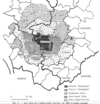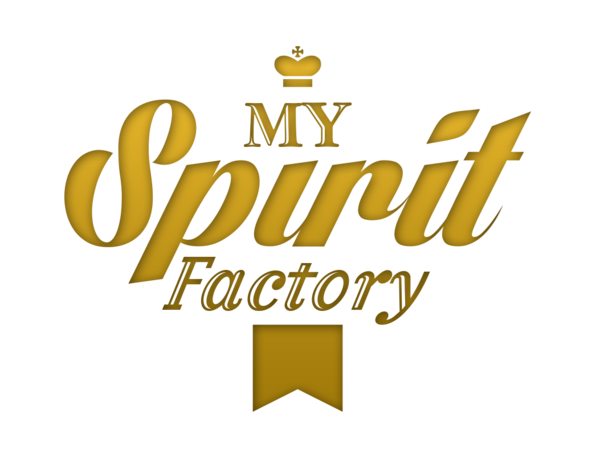The eventful history of the map of cognac crus : between the desire for classification, education and artistic interpretations.
I) The map of the crus of Cognac eaux-de-vie: first drafts (1859-1887)
The need to map the production region of cognac eaux-de-vie in the 19th century is part of a desire to identify and protect a know-how recognized by all but copied by some, to the point of jeopardizing a product whose origin is open to question. This has led to confusion between the name of the product and its origin.
The Dutch were the first to classify the eaux-de-vie from the Atlantic coast and those produced in Cognac were already recognized as being superior and therefore more expensive. But in reality, cognac was distilled from La Rochelle to Bordeaux, until the decree of 1 May 1909 laid the foundations for a geographical production area. In the meantime, the search for the origin of the typical Charentais brandy has led to the first maps.
Henri Coquand's geological studies carried out in 1859 led to the establishment of the first map of the crus, taking into account the notions of environment and quality. It was an engineer from Saintes, Lacroix, who drew up this map and identified 4 different crus: Grande Champagne, Petite Champagne, Premiers Bois and Deuxièmes Bois. However, they do not cover the entire cognac production area, the rest remaining 'unidentified'.

We note the absence of the Borderies which are an integral part of the Premiers Bois, the latter gravitating discontinuously around the Petite and Grande Champagnes. However, there are subtleties and a variety of soils in these different areas...
It is to repair these inaccuracies that C. Mouchet created the 1887 map based on the opposition between champagnes and woods. It is composed of 7 sub-appellations: Grande Champagne, Petite Champagne, Borderie (or Premiers Bois), Fins Bois, Bons Bois, Bois Ordinaires, Bois Communs.
Note that he also mentions Fine Champagne, a blend of Grande Champagne (50% minimum) and Petite Champagne in the legend of the map. It seems that Remy-Martin had already popularized this appellation from 1848. Be careful not to confuse Fine Grande Champagne, Fine Petite Champagne and Fine Champagne...

Curiously, the Grande Champagne does not yet reach the tip of the Merpins plateau and the Petite Champagne encompasses Barbezieux but stops at the gates of Pons and Jonzac. We can see the appearance of the Borderies, also known as Premiers Bois. Its surface area is still only a third of what we know today. The Fins Bois now surround the first growths of Grande and Petite Champagnes all around Cognac with an enclave at Mirambeau where the eaux-de-vies are already renowned by the trading houses.
What is the influence of the latter in the successive cartographic reorganizations? This is a legitimate question, but another event will change the situation: the arrival of phylloxera between 1975 and 1895.
II) Emergence of the cognac appellation: the search for the perfect map (1887-1909)
The phylloxera crisis caused a shortage of eaux-de-vies, so much so that in 1892 the wine merchant Émile Pellisson proposed extending the Bons Bois to Niort, Charente-Limousine, the Dordogne and as far as Blaye, Galgon and Coutras in the Gironde, at the gates of Libournes. He even pushed the Bois Ordinaires as far as Sables-D'Olonnes! The following years saw many other attempts at classification.
Finally, the decree of 1 May 1909 made the delimitation of the cognac production area official. The map drawn up by J-M Guillon on this occasion is an attempt to classify more precisely the eaux-de-vies which are usually placed indistinctly in Fins Bois. There are some changes in Grandes Champagne and Petite Champagne (the latter is losing surface area, especially around Jonzac). The Borderies extended by integrating Cherves and now reaches the gates of Cognac.
The great novelty remains the creation of the Premiers Bois which are distinguished from the Borderies and the Fins Bois. These form a puzzle on the borders of the Grande and Petite Champagnes and the Borderie, taking into account the quotations of the eaux-de-vies from the merchants and certain micro-terroirs. In the north, they extend from Burie to Matha but stop before Rouillac. In the east, they go as far as Saint-Saturnin before Angoulême. To the south and west, there are several patches of First Woods, including a portion that runs from Pons to Saintes, which adds some complexity to this map.

It is true that in some places the Premiers Bois eaux-de-vie are recognised as being of superior quality. But some people are not satisfied with this division, in particular the communes previously classified as Petite Champagne and now placed in Premiers Bois, or even directly in Fins Bois like some villages near Jonzac.. Others for their part do not understand why they are not classified as Premiers Bois and must be content to remain in Fins Bois..
J-M Guillon even includes a few communes in the Deux-Sèvres and Dordogne regions, including Saint-Aulaye which will see the revival of cognac production from its vines in 2021 thanks to the Maison Camus.

In the end, the desire for precision in the classification caused tensions and the 1909 map was quickly relegated to the closet or sometimes even destined to be destroyed (see "Le Cognac à la Conquête du Monde" by Gilles Bernard, Presses Universitaires de Bordeaux, 2011). Today, this map is still a source of nostalgia for some producers who claim to be Premiers Bois...
III) The 1936 AOC cognac map (temporarily ?) buries the debates but not the creativity (1938-2021)
The creation of the AOC on 15 May 1936 brought the cards down and the region has been stable ever since. A new official map was published in 1938 which marked a break with the 1909 map on many points. In particular with the disappearance of the Premiers Bois, which resulted in a return to uniform Fins Bois surrounding the premiers crus as in 1887.
Grande Champagne includes new communes to the east (Saint Même, Gondeville...) For its part, Petite Champagne gains towards the south by annexing the territories lost in 1909 and returns to Jonzac. Note the formation of a curious enclave of Petite Champagne wedged between Grande Champagne and Fins Bois on the north bank of Bourg-Charente, where the castle of Grand-Marnier Lapostolle stands. The Borderies also expanded by integrating Burie and the Netherlands of Cherves. The Bois Communs and the Bois Ordinaires have also been merged, again for the sake of simplification.

The "choc de simplification" seems to have buried the debates concerning the classification of the crus, but does this mean that the map will remain fixed with regard to climate change for example? Nowadays, it is mainly promoted by the BNIC with its graphic charter and its orange colours. It serves as an educational and information tool, as well as a means of promoting and protecting the appellation. It is without doubt the most consulted document about cognac.
The temptation is therefore great to revisit this card while respecting the contours and the compulsory information in order to perceive cognac in a different way. This is the challenge taken up by the graphic designer Virginie Drahonnet from the Citrus Aurantium agency based in Cognac. In love with her region, she has been looking for some time to promote it by means of an object, when the idea came to her to use cartography. It is now done with 3 first different works revealed on the occasion of the French Spirits Day on March 31st 2021.
Virginie offers us a first card, pure and modern in black and white, rather trendy:

Then there is a second, rather classic, but revisited menu. Highly coloured, it offers more 'pep'. Note that this one can be personalised on demand, for example by adding your company logo, the geographical location of a distillery and by customising the colours:

Finally, a bistro version representing a map drawn with chalk on a slate. With the ambition to desacralize a map sometimes a little too institutional:

Of course, the range is likely to grow. To order your copy, this is the place to be:
In the end, as Virginie Drahonnet states in her artistic approach, it is important to represent all the crus well because the richness of cognac is also in the blending of different eaux-de-vie. As for the maps, they remind us how much the diversity of French terroirs remains our strength.
JÉRÔME SAVOYE
Contact us for any development of spirits, packaging and tailor-made services for your company (support in organisation, pack development, quality control, drafting of product sheets, creation, articles, contents and biographies...).
Download the free spirits development mind map (PDF) from our homepage here:
https://www.myspiritfactory.com/
